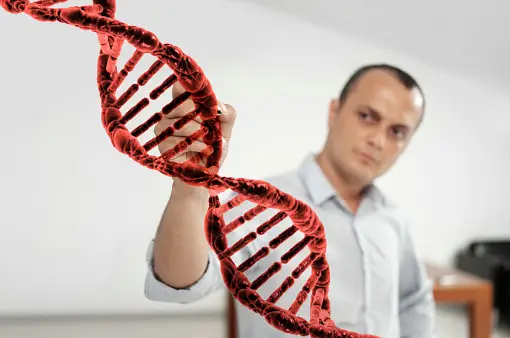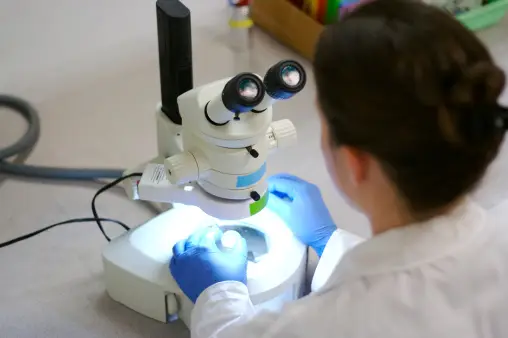
How Does Gene Therapy Work In 2023? Gene therapy has emerged as a groundbreaking approach in the field of medicine, offering new possibilities for treating various genetic disorders and diseases. In 2023, advancements in gene therapy have paved the way for more effective treatments and increased hope for patients and their families.
Introduction to Gene Therapy
Gene therapy involves the introduction, modification, or replacement of genes within an individual’s cells to treat or prevent diseases. By targeting the underlying genetic cause of a disorder, gene therapy aims to provide long-lasting or even permanent solutions to previously untreatable conditions.
Understanding the Basics of Gene Therapy
In gene therapy, a functional gene is introduced into the patient’s cells to replace a defective or missing gene. This can be achieved through various delivery systems, which act as carriers to transport the therapeutic genes into the target cells. Once inside the cells, these genes can produce functional proteins, restore normal cellular processes, or modulate gene expression.
Types of Gene Therapy

There are two main types of gene therapy: in vivo and ex vivo. In in vivo gene therapy, the therapeutic genes are directly administered into the patient’s body, targeting the affected tissues or organs. Ex vivo gene therapy, on the other hand, involves the extraction of cells from the patient, modification of the genes outside the body, and then reintroduction of the modified cells back into the patient.
Viral Vector Delivery Systems
Viral vectors are commonly used in gene therapy as delivery systems. They are derived from viruses that have been modified to remove their pathogenic properties while retaining their ability to efficiently deliver genes into target cells. Examples of viral vectors used in gene therapy include adenoviruses, lentiviruses, and adeno-associated viruses (AAVs).
Non-Viral Vector Delivery Systems

Non-viral vector delivery systems offer an alternative to viral vectors. These delivery systems can be in the form of nanoparticles, liposomes, or naked DNA/RNA molecules. Non-viral vectors have the advantage of being safer and less immunogenic compared to viral vectors, although they generally exhibit lower transduction efficiency.
Read More: Top 10 Facts About Lunar Exploration In 2023
Targeting Specific Cells and Tissues
To ensure precise and targeted gene delivery, researchers are exploring various strategies. They employ tissue-specific promoters to control gene expression in specific cell types or use tissue-specific viral vectors. Additionally, advancements in nanotechnology enable the development of nanoparticles that can specifically target certain cells or tissues, enhancing the efficacy of gene therapy.
Editing Genes with CRISPR-Cas9
CRISPR-Cas9, a revolutionary gene-editing tool, has revolutionized the field of gene therapy. It allows scientists to precisely modify genes by cutting and replacing specific DNA sequences. CRISPR-Cas9 holds immense potential for correcting genetic mutations and preventing the progression of genetic diseases.
Gene Therapy for Genetic Disorders
Gene therapy has shown promising results in treating a range of genetic disorders, including cystic fibrosis, hemophilia, muscular dystrophy, and sickle cell disease. By addressing the underlying genetic abnormalities, gene therapy offers hope for individuals affected by these conditions, potentially improving their quality of life and lifespan.
Gene Therapy in Cancer Treatment
In the field of oncology, gene therapy has emerged as a potential strategy for combating cancer. Researchers are developing gene therapies that target cancer cells directly, either by killing them or by enhancing the body’s immune response against them. These therapies hold the promise of more effective and personalized cancer treatments.
Challenges and Limitations of Gene Therapy
While gene therapy presents immense potential, it also faces challenges and limitations. Some of these include the complexity of certain genetic disorders, immune responses against the therapeutic genes or delivery systems, and the potential for off-target effects. Additionally, the high costs associated with gene therapy pose a barrier to widespread implementation.
Ethical Considerations

The advancements in gene therapy raise important ethical considerations. These include concerns regarding the equitable access to gene therapies, the potential for unintended consequences, and the ethical implications of germline editing, which involves modifying genes in reproductive cells and passing the modifications to future generations.
Future Prospects of Gene Therapy
Looking ahead, the future of gene therapy appears promising. Ongoing research aims to refine delivery systems, improve gene editing techniques, and expand the scope of treatable genetic disorders. With continued advancements, gene therapy has the potential to revolutionize medicine and provide effective treatments for a wide range of diseases.
Conclusion
In conclusion, gene therapy is a transformative field that holds immense promise for treating genetic disorders and diseases. By targeting the root causes at the genetic level, gene therapy offers the potential for long-lasting and curative treatments. However, challenges remain, and ethical considerations must be carefully addressed to ensure the responsible and equitable use of this powerful technology.
FAQs
What is gene therapy?
Gene therapy is a medical approach that involves introducing, modifying, or replacing genes within an individual’s cells to treat or prevent diseases.
How does gene therapy work?
Gene therapy works by delivering functional genes into the patient’s cells, either directly or by modifying cells outside the body and reintroducing them. These genes can correct genetic abnormalities, produce therapeutic proteins, or modulate gene expression.
What are the types of gene therapy?
The two main types of gene therapy are in vivo and ex vivo. In in vivo gene therapy, genes are administered directly into the patient’s body, while ex vivo gene therapy involves modifying cells outside the body before reintroducing them.
Can gene therapy cure genetic disorders?
Gene therapy has shown promising results in treating various genetic disorders. While it may not offer a cure for all conditions, it has the potential to significantly improve patients’ quality of life and lifespan.
What are the future prospects of gene therapy? The future of gene therapy is bright, with ongoing research focusing on improving delivery systems, gene editing techniques, and expanding the range of treatable genetic disorders. Continued advancements hold the potential to revolutionize medicine and transform patient care.












7 Comments